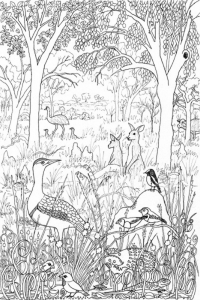The American Museum of Natural History (AMNH) curates more than 33 million specimens. Yet, visitors only get to see a tiny fraction of these on display. Even the Fossil Halls, one of the largest museum exhibits in the world, contains just 600 or so of the museum’s finest specimens. These specimens may be the most beautiful and complete, but what about the millions of specimens behind the scenes?
Most visitors don’t realize that museums require huge storage space to curate many times the number of objects on display. These storage spaces may not appear exciting at first glance, but this is where paleobiologists learn the most about Earth’s past. Rows and rows of cabinets, shelving units, and crates contain the data that support scientific research. It’s critical that the collections are maintained so that if one scientist wants to check the reproducibility of another scientist’s work, the specimens are available for testing. When new specimens are added to the collection, we can test those specimens to see if previous conclusions still hold up. Then, scientists are able to use the same collections to test more questions and add to our knowledge.
This summer, I was given access to the AMNH collections for my oreodont research and got to see some of those specimens behind the scenes. Oreodonts are a diverse group of prehistoric herbivores found only in North America. It’s easy to remember their name if you like Oreo cookies. They exhibit different body forms at different times and survived for more than 30 million years. Some look like a pig, but others have traits that are cat-like or tapir-like. We now know they were most closely related to camels. Robert Bruce Horsfall’s reconstructions of what oreodonts may have looked like were published with Malcolm Rutherford Thorpe’s research in 1913. Thorpe and Horsfall looked at some of the same fossils I am using in my research.


 Promerycochoerus carrikeri is pig-like (top), Eporeodon socialis is cat-like (bottom left), and Brachycrus laticeps is tapir-like (bottom right). Sketches by Robert Bruce Horsfall.
Promerycochoerus carrikeri is pig-like (top), Eporeodon socialis is cat-like (bottom left), and Brachycrus laticeps is tapir-like (bottom right). Sketches by Robert Bruce Horsfall.
Though extinct today, oreodonts are the most common mammal fossils found in Eocene and Oligocene deposits. It’s hypothesized that there may be a connection between grassland expansion in the Miocene and their extinction seven million years ago. It is surprising that not even one of such an apparently diverse group survived while camelids, horses, and peccaries survived through the Miocene into the Pleistocene. I’m researching changes in oreodont body forms during grassland expansion to try to understand why oreodonts disappeared from the west-central Great Plains about eight million years ago. This research will help us understand more about extinction and which mammals species may be more at risk today.
The oreodont collections at the AMNH are extensive. There are 240 cabinets of fossils containing as many as 9 drawers of fossils in each cabinet. Specimens that are too large to be stored in the cabinets are cataloged on shelving units. The specimens are generally organized in the order they evolved (as understood at the time the specimens were added to the cabinets). So as I work through the collection, I get to observe oreodont morphology, oreodont body forms, at different snapshots in time. This type of research depends on large collections like this one. It’s an exciting place to be!






























